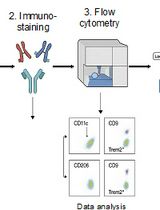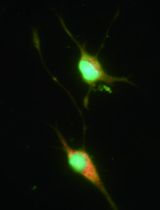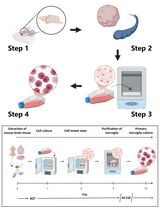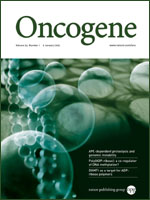- Submit a Protocol
- Receive Our Alerts
- Log in
- /
- Sign up
- My Bio Page
- Edit My Profile
- Change Password
- Log Out
- EN
- EN - English
- CN - 中文
- Protocols
- Articles and Issues
- For Authors
- About
- Become a Reviewer
- EN - English
- CN - 中文
- Home
- Protocols
- Articles and Issues
- For Authors
- About
- Become a Reviewer
Isolation of Human Blood Progenitor and Stem Cells from Peripheral Blood by Magnetic Bead
Published: Vol 2, Iss 21, Nov 5, 2012 DOI: 10.21769/BioProtoc.281 Views: 16696

Protocol Collections
Comprehensive collections of detailed, peer-reviewed protocols focusing on specific topics
Related protocols

Identification and Sorting of Adipose Inflammatory and Metabolically Activated Macrophages in Diet-Induced Obesity
Dan Wu [...] Weidong Wang
Oct 20, 2025 2122 Views

Selective Enrichment and Identification of Cerebrospinal Fluid-Contacting Neurons In Vitro via PKD2L1 Promoter-Driven Lentiviral System
Wei Tan [...] Qing Li
Nov 20, 2025 1268 Views

Revisiting Primary Microglia Isolation Protocol: An Improved Method for Microglia Extraction
Jianwei Li [...] Guohui Lu
Dec 5, 2025 1170 Views
Abstract
The antigen CD34 is a well-known marker present on human progenitor and stem cells. This protocol explains the isolation of CD34+ cells from peripheral blood using magnetic bead separation technique. The approximate abundance of CD34+ cells in blood is 0.1% of mononuclear cells.
Keywords: HematopoiesisMaterials and Reagents
- CD34+ cells
- Peripheral blood sample (at least 50 ml)
- Dextran solution (Sigma-Aldrich, catalog number: D1037-500G )
- PBS (Life Technologies, Invitrogen™, catalog number: 14190-094 )
- Ficoll human (PAA Laboratories GmbH, catalog number: P04-60500 )
- Fetal calf serum (FCS) (Hyclone, catalog number: SV30160.03 )
- CD34 MicroBeads and FcR blocking reagent (Miltenyi Biotec, catalog number: 130-046-702 )
- APC mouse anti-human CD34 antibody (BD Biosciences, catalog number: 555824 )
- EDTA
- 2% dextran solution
- 1 L 2% dextran solution (see Recipes)
Equipment
- Centrifuges
- Auto MACS Pro separator (Miltenyi Biotec)
- 30 μm nylon mesh (Miltenyi Biotec, catalog number: 130-041-407 )
- Tissue culture hood
- Flow cytometer
- Vacuum filter unit (22 μm, GP Millipore Express PLUS membrane)
Procedure
- Peripheral blood mononuclear cells (PBMCs) separation
- Under tissue culture hood, add equal volume of 2% dextran solution and blood sample and incubate it at room temperature for 45 min (elimination of majority of erythrocytes).
- Collect the supernatant and centrifuge at 1,600 rpm (ROTANA 460RF, rotor 5624 Hettich) for 10 min.
- Discard the supernatant and re-suspend the pellet, containing lymphocytes and granulocytes, in 10 ml PBS with 0.1% EDTA.
- Add 7.5 ml ficoll solution to a suitable centrifuge tube and carefully top it with 10 ml cell suspension from step A3.
- Centrifuge at 2,200 rpm for 20 min.
- After centrifugation there are three phases: Upper one containing plasma and platelets. The whitish layer containing the mononuclear cells and the lower phase and pellet containing the granulocytes.
- Discard upper aqueous phase containing plasma and collect the whitish layer containing PBMCs (around 2 ml) and re-suspend it in 50 ml of PBS with 0.1% EDTA.
- Count the PBMCs.
- Centrifuge the PBMCs at 1,200 rpm for 10 min and re-suspend 1 x 108 cells in 300 μl of PBS with 0.1% EDTA. If you have 5 x 107 cells, you need to resuspend in 150 μl of PBS with 0.1% EDTA.
- Under tissue culture hood, add equal volume of 2% dextran solution and blood sample and incubate it at room temperature for 45 min (elimination of majority of erythrocytes).
- CD34 magnetic labeling
- Add CD34 MicroBeads and FcR blocking reagent (100 μl each for 1 x 108 cells) to 300 μl of PBMCs suspension. The FcR blocking reagent is used to avoid non specific labeling.
- Mix well and incubate at 4 °C for 30 min (or overnight with 30% FCS).
- Add CD34 MicroBeads and FcR blocking reagent (100 μl each for 1 x 108 cells) to 300 μl of PBMCs suspension. The FcR blocking reagent is used to avoid non specific labeling.
- Magnetic separation with auto MACS separator
- Add 10 ml PBS 0.1% EDTA to magnetic beads labeled cells and centrifuge them at 1,200 rpm for 10 min.
- Discard supernatant and re-suspend the cells in PBS with 0.1% EDTA (500 μl for 1x 108 cells).
- Filter the cells using 30 μm nylon mesh to exclude the cell clumps and rinse the tube and filter with additional 500 μl PBS with 0.1% EDTA to collect maximum cells.
- Pass the cells through auto MACS separator as explained in user manual (CD34 MicroBead kit human).
- After separation, collect CD34+ cells and determine cell number.
- Wash the cells with 5-10 ml PBS 0.1% EDTA at 1,200 rpm for 10 min at room temperature.
- Once washed re-suspend cells in appropriate cell culture medium or freeze them for later use.
- Add 10 ml PBS 0.1% EDTA to magnetic beads labeled cells and centrifuge them at 1,200 rpm for 10 min.
- CD34+ cells purity assessment
- Take 10 x 103 cells from step C 4 and re-suspend them in 100 μl of PBS.
- Add 1 μl of APC-conjugated mouse anti-human CD34 antibody.
- Incubate for 15-20 min at 4 °C in dark.
- Wash the cells with 500 μl PBS at 1,200 rpm for 10 min.
- Discard the supernatant and re-suspend the cells in 300 μl PBS.
- Pass them through a flow cytometer and analyze the cells for APC labeling excluding dead cells and debris using scatter signals.
- Take 10 x 103 cells from step C 4 and re-suspend them in 100 μl of PBS.
Recipes
- 1 L 2% dextran solution
Add 9 g NaCl and 20 g dextran to beaker containing 800 ml deionized H2O
Dissolve NaCl and dextran using magnetic stirrer and magnetic stirrer bar (approx. 2 h)
Add deionized H2O to make up the volume to 1 L
Under tissue culture hood, filter the 2% dextran solution using 22 μm pore vacuum filter
Conserve the solution at 4 °C
Acknowledgments
The protocol was previously published in Nakatake et al. (2012). This work was supported by grants from ” Association pour la Recherche sur le Cancer (projet libre 2012), Agence Nationale de la Recherche, programme Jeunes Chercheuses et Jeunes Chercheurs, Laboratory of Excellence Globule Rouge-Excellence is funded by the program “Investissements d’avenir.” HS was supported by fellowships from la Ligue Nationale Contre le Cancer.
References
- Nakatake, M., Monte-Mor, B., Debili, N., Casadevall, N., Ribrag, V., Solary, E., Vainchenker, W. and Plo, I. (2012). JAK2(V617F) negatively regulates p53 stabilization by enhancing MDM2 via La expression in myeloproliferative neoplasms. Oncogene 31(10): 1323-1333.
Article Information
Copyright
© 2012 The Authors; exclusive licensee Bio-protocol LLC.
How to cite
Hasan, S. and Plo-Azevedo, I. (2012). Isolation of Human Blood Progenitor and Stem Cells from Peripheral Blood by Magnetic Bead . Bio-protocol 2(21): e281. DOI: 10.21769/BioProtoc.281.
Category
Stem Cell > Adult stem cell > Hematopoietic stem cell
Cell Biology > Cell isolation and culture > Cell isolation
Do you have any questions about this protocol?
Post your question to gather feedback from the community. We will also invite the authors of this article to respond.
Share
Bluesky
X
Copy link









